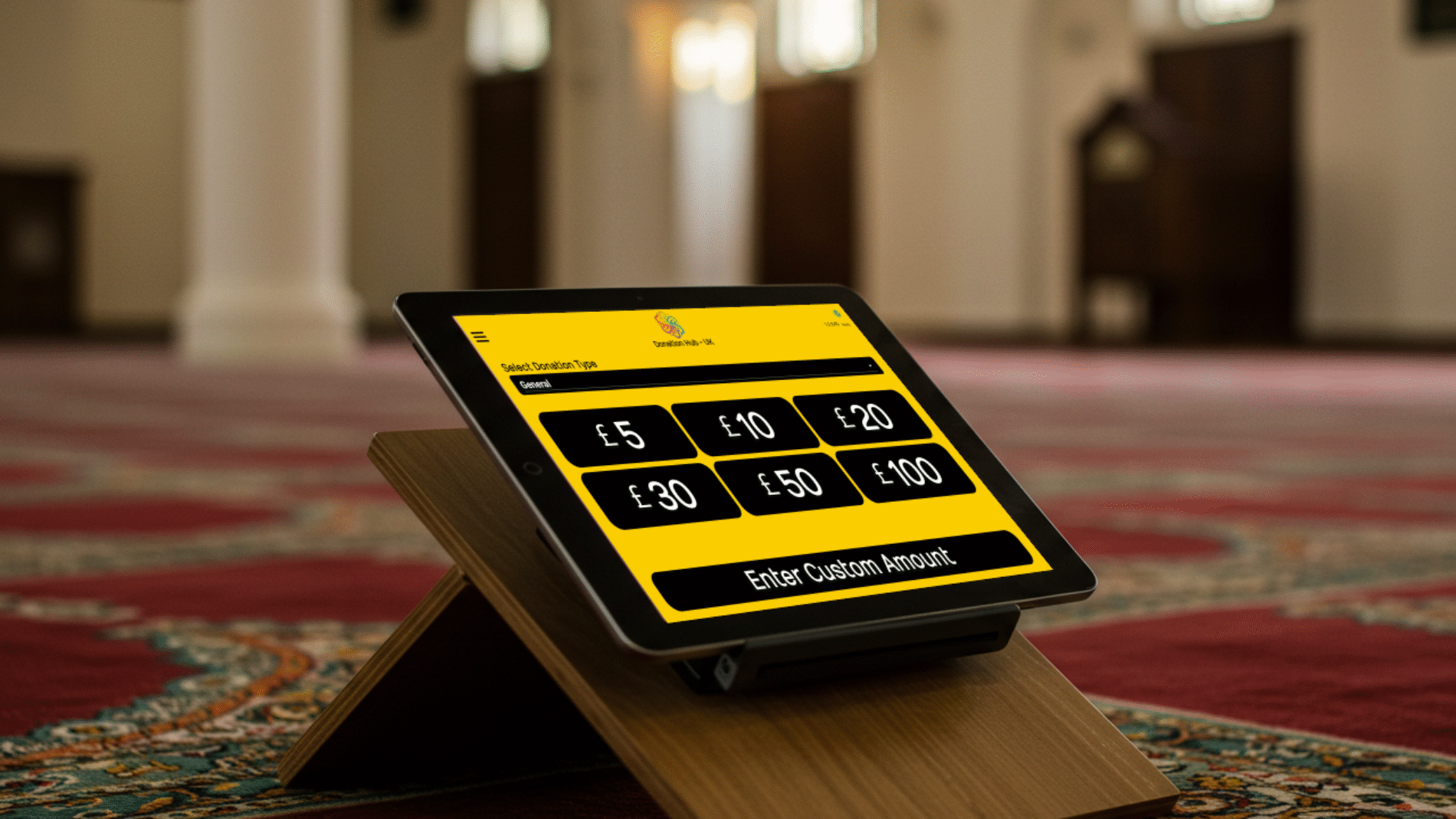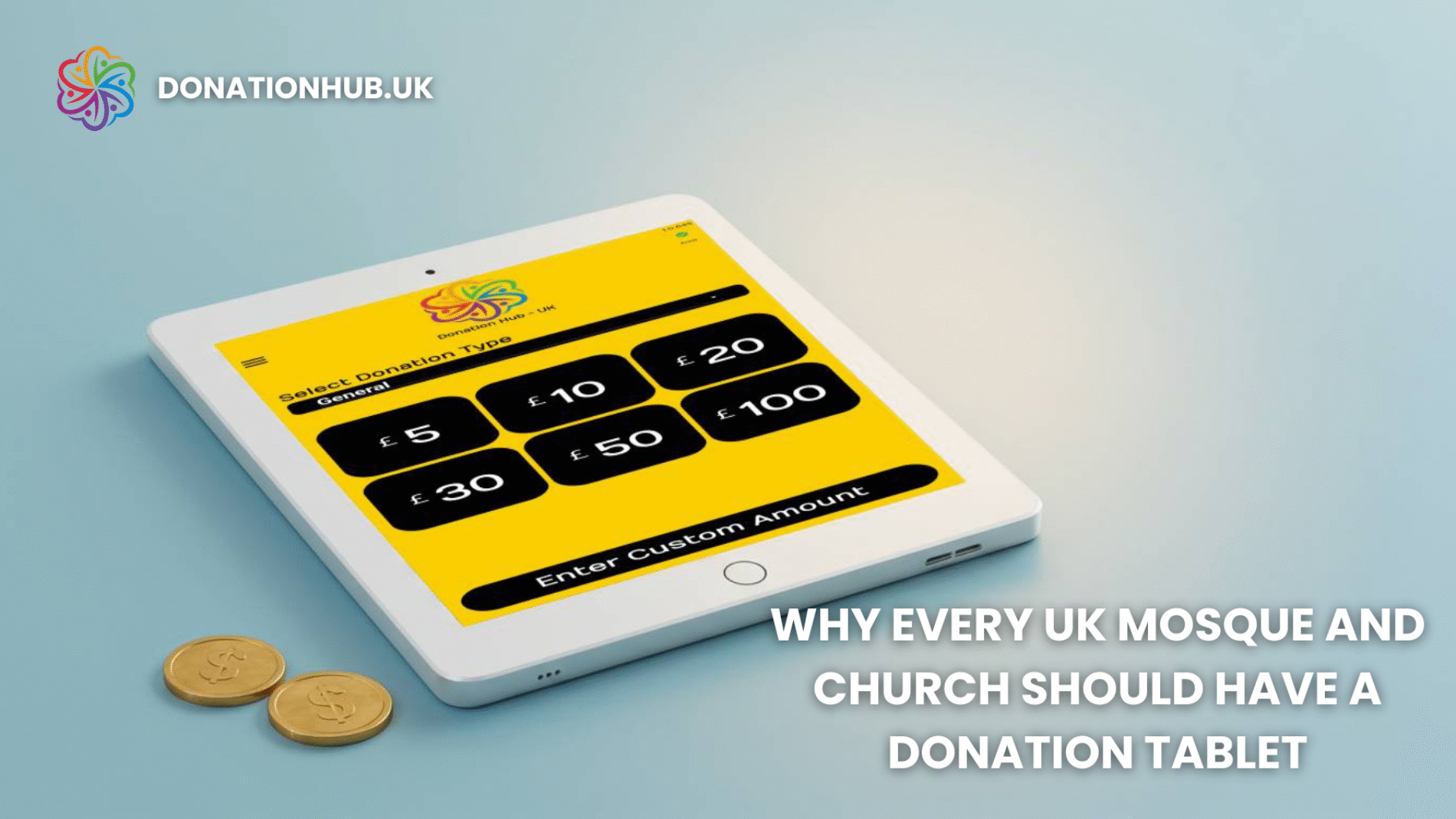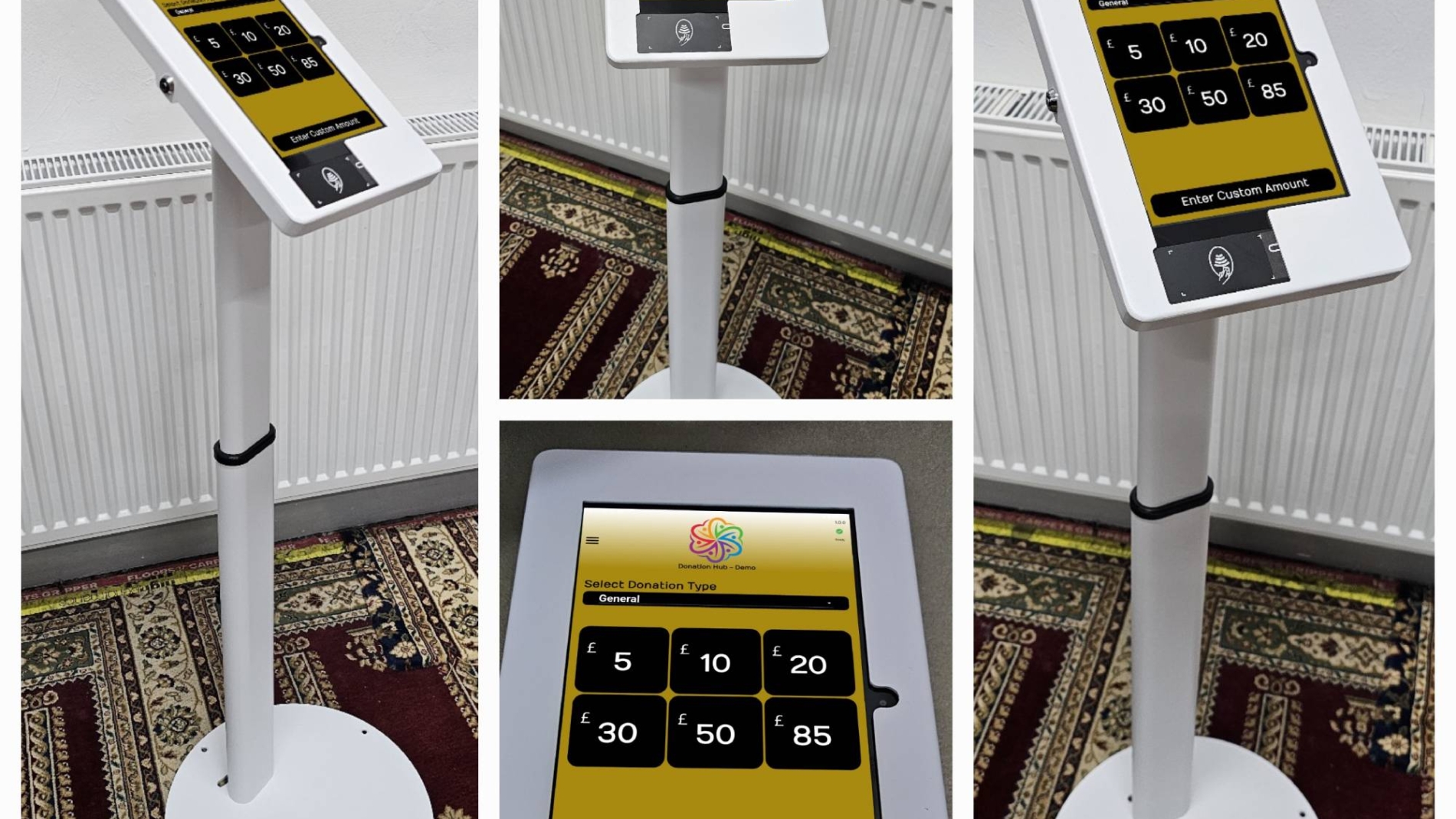In an era where cash is disappearing and contactless payments dominate daily transactions, UK charities are embracing contactless donation terminals to make giving easier, faster, and more secure. From churches and mosques to museums and community centers, Donation Tablets, Donation Kiosks, and platforms like Donation Hub are transforming the way donations happen.
This article explores the top 10 innovative ways UK charities are using contactless technology, the key benefits, challenges, and why Donation Tablets in the UK are becoming the preferred choice.
Why Contactless Giving Matters Today
According to recent studies, 87% of UK adults use contactless payments every month, and cash usage has dropped significantly. Traditional donation methods such as cash boxes are no longer enough. That’s where contactless donation terminals UK come in—enabling donors to contribute with a simple tap of a card or phone, without downloading an app or carrying cash.
Keywords to remember:
- Contactless donation terminals UK
- Donation Tablet UK
- Donation Hub
- Donation Kiosk
Top 10 Ways UK Charities Are Innovating with Contactless Donation Terminals
1. Placing Terminals at High-Traffic Locations
Charities are positioning donation kiosks in strategic locations like entrances, exits, and event venues. For example, museums place them at gallery exits to encourage visitors to donate after enjoying the exhibits.
Why it works: Captures donors when they feel most connected.
Challenge: Requires electricity and secure mounting for theft prevention.
2. Using Donation Tablets for Mobility
Unlike fixed kiosks, Donation Tablets offer flexibility. Volunteers can carry them during fundraising events, enabling on-the-spot donations without the need for cash or complicated setup.
Why it works: Perfect for street collections, charity walks, and religious gatherings.
Tradeoff: Requires portable Wi-Fi or 4G connectivity to function reliably.
3. Integrating with Gift Aid for UK Tax Benefits
UK charities are combining contactless terminals with Gift Aid options. After tapping to donate, donors can add Gift Aid via a quick on-screen form—boosting donations by 25% without extra cost to donors.
Benefit: Maximizes revenue for charities.
Challenge: Needs user-friendly design to avoid slowing the process.
4. Creative Branding on Donation Kiosks
Organizations are turning donation terminals into branding tools by customizing kiosks with charity logos, campaigns, and impact messages. A well-branded terminal increases trust and inspires generosity.
Why it works: People donate more when they recognize the cause.
Tradeoff: Higher cost for branded hardware versus generic kiosks.
5. Event-Specific Donation Campaigns
At charity galas, festivals, or religious events, contactless donation terminals display event-specific messages like “Support Our Ramadan Appeal” or “Help Preserve Heritage Today.” This personalizes the experience and drives engagement.
Impact: Creates urgency and emotional connection.
Challenge: Requires updating content for each campaign.
6. Tap-to-Donate Screens in Shop Windows
Some UK charities have installed contactless donation pads behind shop windows, allowing passersby to tap their card and donate—even when the shop is closed.
Innovation: 24/7 donation capability.
Tradeoff: Limited interaction compared to in-person engagement.
7. Combining QR Codes with Contactless Terminals
Many charities are blending contactless donation with QR codes for flexibility. Those without cards can scan a QR code and donate via mobile.
Why it’s smart: Covers both tech-savvy and traditional donors.
Challenge: Requires proper signage and donor education.
8. Interactive Displays on Donation Tablets
Donation Tablets often feature engaging screens that show impact stories, images, or videos while donors complete their transaction. This creates a powerful emotional connection.
Benefit: Keeps donors engaged for future contributions.
Tradeoff: Requires regular content updates.
9. Contactless Giving for Houses of Worship
Mosques, churches, and temples in the UK are adopting Donation Tablets for Friday prayers, Sunday services, and special events. As fewer people carry cash, this ensures religious institutions can maintain donations for operations and charitable work.
Impact: Ensures steady donations during key religious occasions.
Challenge: Educating older worshippers who may prefer cash.
10. Integrating with Fundraising Platforms like Donation Hub
Platforms like Donation Hub allow charities to manage donations from multiple terminals, track performance, and generate reports. This centralization saves time and ensures transparency.
Advantage: Professional, data-driven approach to fundraising.
Tradeoff: Requires staff training to use the platform effectively.
Balancing Innovation with Accessibility
While these innovations offer convenience, charities must balance tech adoption with donor inclusivity. Older donors or those without contactless cards may still prefer cash or traditional methods. The best approach combines digital and offline options to ensure no one is excluded.
Challenges of Contactless Donation Terminals
- Cost: Initial investment in hardware like kiosks or tablets.
- Connectivity: Requires reliable internet for real-time transactions.
- Security Concerns: Though encrypted, donors need reassurance about data safety.
- Training: Volunteers and staff must learn how to use the devices.
Solution: Choosing user-friendly systems like Donation Tablets reduces complexity and cost while maximizing accessibility.
Why Donation Tablets UK Are the Future
Among all options, Donation Tablets strike the perfect balance between affordability, mobility, and ease of use. Unlike large kiosks, tablets are portable and ideal for mosques, churches, community centers, and charity events. Platforms like Donation Hub make managing these devices seamless—allowing charities to accept donations anytime, anywhere without third-party apps.
Key Benefits of Donation Tablets
- Low-cost compared to full kiosks
- Easy setup—plug and play
- Portable for events and street fundraising
- Customizable branding and campaigns
- Perfect for small to medium-sized charities
Ready to Simplify Donations?
Discover how Donation Hub can help your organization accept secure, instant, and hassle-free donations through Donation Tablets.
👉 Get Started with Donation Tablets UK Today!



